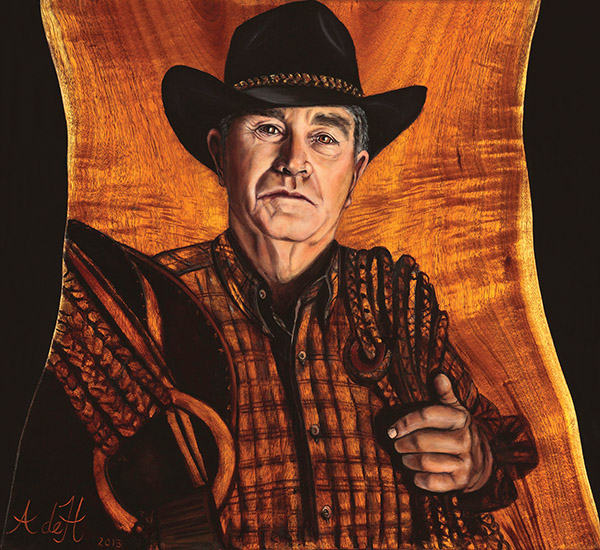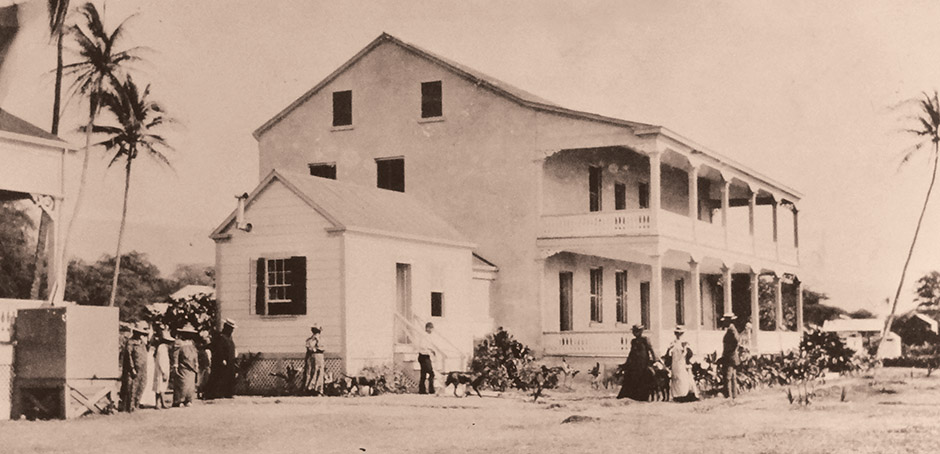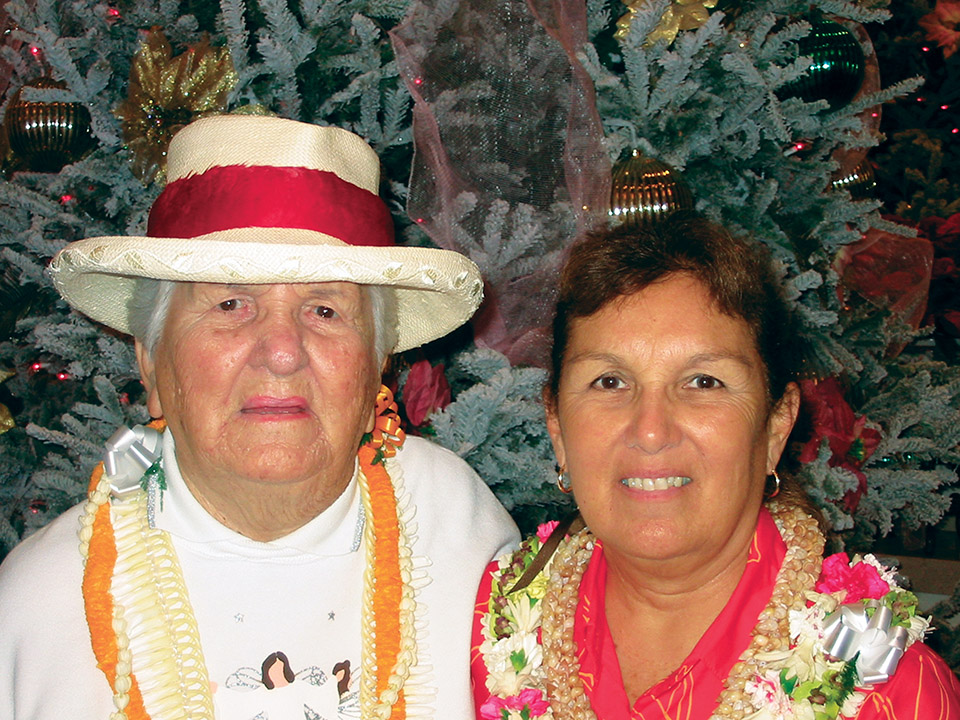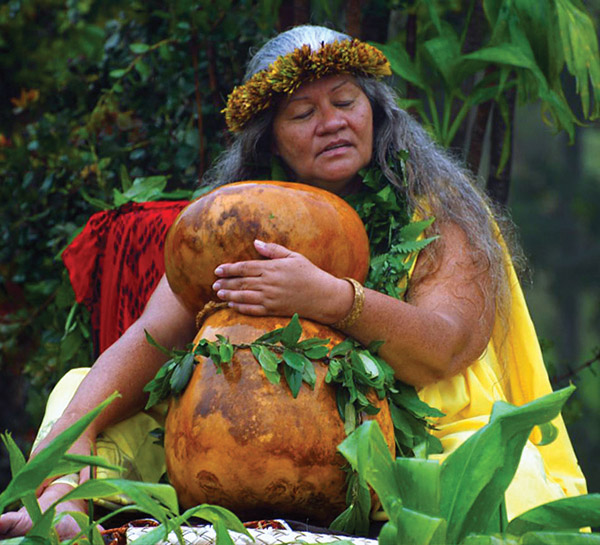
Kūpuna Talk Story: Kumu Raylene Ha‘alelea Kawaiae‘a, Native Hawaiian Cultural Practitioner
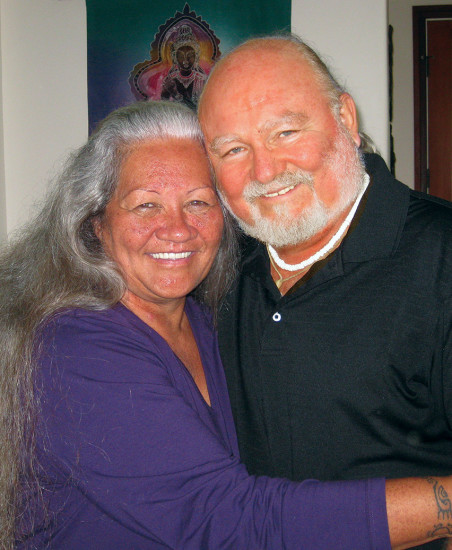
By Keith Nealy
As a filmmaker and storyteller, I have been blessed with the gift of sharing the mana‘o (knowledge) of more than 60 of Hawai‘i’s most revered kūpuna in spirited conversation exploring the cultural legacy they carry in their memory. Each conversation has been a journey back in time into the world they inhabited, through their eyes, and expressed in their words.
I first got to know Kumu Raylene in February 1999 in Kohala on the day I was to unload a 45-foot shipping container filled with my worldly possessions and all my film and television production equipment from the mainland. Out of nowhere, this impressive woman with her two handsome, strong sons showed up at my house and announced, “We come to kōkua (help).” Sensing my surprise, she beamed this warm smile with a twinkle in her eye, hugged me, and whispered, “Welcome home.” And then she looked at me right in the eyes and said very seriously, “You were brought here for a reason.”
Little did I know that this would be the beginning of a 14-year friendship that would change the course of my life. Kumu would become one of my dearest friends, spiritual guide, cultural advisor, and storyteller for many of the films I made about the Hawaiian culture. I affectionately called her my “Pono Meter” as we had endless lengthy discussions about the culture, the kaona (hidden meaning), and historical and philosophical perspectives in my quest to learn.
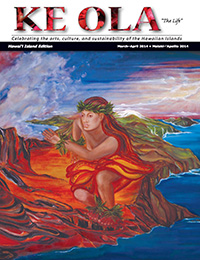
She taught me not to let my physical Caucasian “package” get in the way of my storytelling because my heart, my aloha, and my ‘aumakua (spiritual ancestors) would guide me. And she taught me the essence of what was to become my personal mission here on Hawai‘i Island—the importance of building cultural bridges and helping Hawai‘i and the world become a better place.
The following is part of a conversation I had with her during the filming of Huliau—Turning Point. We were talking about the kind of work she did at the Queen Lili‘uokalani Children’s Center in Kailua-Kona.
Keith: Kumu, tell me about the kind of work you do at the center and how it is different from traditional learning methods.
Kumu: We have a variety of programs that we utilize as tools to connect the participants with cultural practices and these values to be able to take it and utilize it in their everyday lives.
Keith: Can you give me an example of the kind teaching you do that is outside the normal school curriculum?
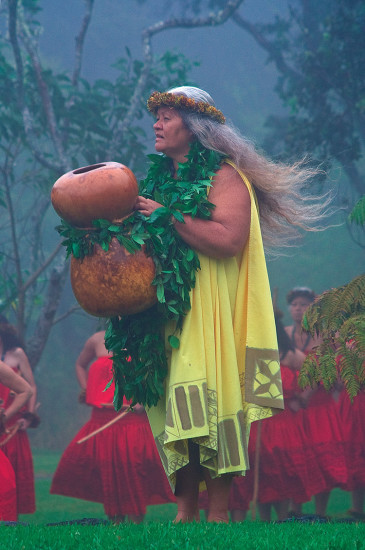
Kumu: For Hawaiians, one very important area to develop is our inner ‘ike or something you might call intuition. So with students I might have a discussion about what do you feel? Do you have trust in your feeling? Which links us back to the capacity and knowledge of our ancestors—they knew those things. They knew what it felt like. They knew that sense that comes over the body of mind and the heart that says this is where I need to be right now.
Keith: Can you give me an example or a story of what that might look like?
(She tells me the story of a boy who was working with her restoring the Kamehameha Heiau in Kohala.)
Kumu: This boy was sitting there, crying. And I thought, oh my. So I went up to him and I said is there anything that I can help you with?
He just shook his head.
I asked, “Why is it that you are crying?”
He said, with tears streaming down his face, “It’s because I never knew I could do this. I didn’t think it would be here, but I just believed that what I was hearing was right, and look! Look at this! Look what I found!”
I asked, “So are you happy?”
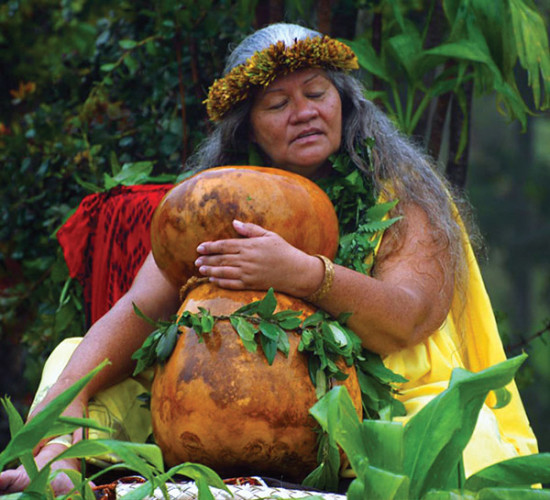 He said, “Yes, but now, what am I supposed to do with it? What am I supposed to do with this knowledge? With this! I found this stone! I want to come here and I want to take care of these places. I want to know—how that I’ll know—inside me—what is right to do—and when to do it?”
He said, “Yes, but now, what am I supposed to do with it? What am I supposed to do with this knowledge? With this! I found this stone! I want to come here and I want to take care of these places. I want to know—how that I’ll know—inside me—what is right to do—and when to do it?”
(Kumu takes a breath, wipes the tears from her eyes.)
That’s the first step. That is the kind of experience that the culture can offer—to bring it into their natural world—that this is there for you if you have trust in your capacity.
You know, we talk about building self-esteem? We talk about building capacity? Well, this is the core of it. To get someone to listen to their unique gifts—that they are connected in so many ways that they might not experience it in school—not that they might not; more times they will not. Part of what we do is to give them a future for them to perceive. And therein lays the hope.
Keith: Many times I get asked by malihini (visitors), “Do you ever take all the beauty of Hawai‘i and aloha spirit for granted?” How would you respond to that?
Kumu: That’s easy for me to answer. I’ve also learned that it’s a matter of perspective. It reminds me of a story of this young boy who was visiting from Israel and at the end of the day before they were leaving he said, “I have a question for you.”
I said, “Of course what is it?
He asked, “Are you always this happy?”
I had to think about that and I said, “Hmm…? Yeah, pretty much.”
He asked, “How did you do that? Because when I leave here I’m going to go back to a world where my country is at war. I will be going into that war and I never thought there was a place in this world that had happiness. But I see that you and Uncle Kindy have that and happiness does exist in our world.”
That’s such a wondrous thought—for him to be able to express that in a tangible manner because I never thought that happiness might not exist. And for a young person even to perceive that there is no such thing as happiness—wow—how is that? What kind of a world are we creating? So, yes, it is possible to take some things for granted.
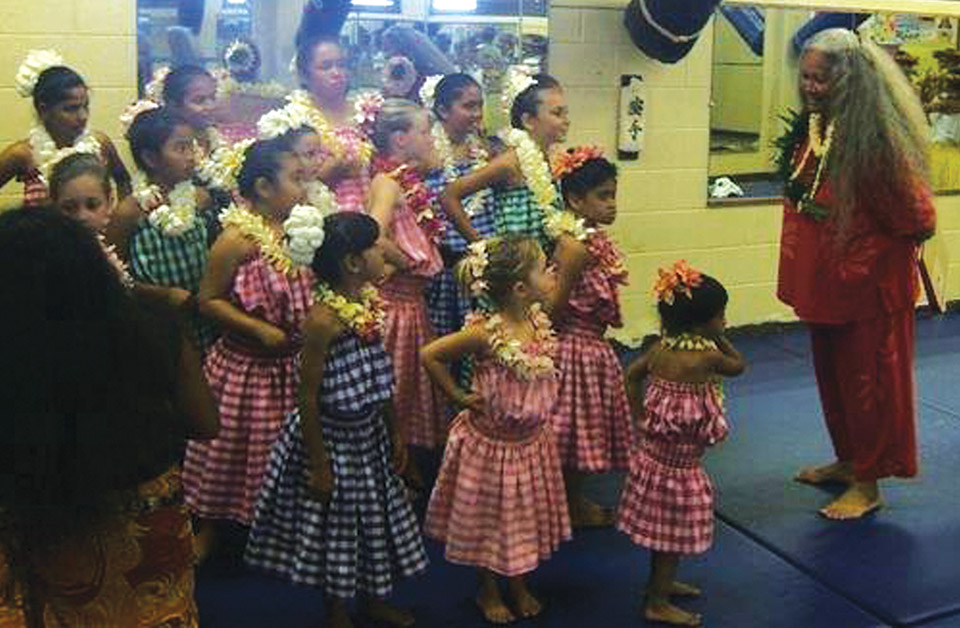
Keith: It appears that a big part of what you do and what you believe involves preserving the Hawaiian culture and the old ways. And bringing people from all walks of life together in harmony whether it is through dance or through your work with ho‘oponopono. Why does preserving the culture and bringing people together interest you so much, and what do you see as obstacles to succeeding?
Kumu: When I think about the value of preserving culture or even the necessity to do so, if we can understand each other’s culture—if we can see the importance and the passion that each one holds as important things, we will be the better for it—you and I—us and them—all of us altogether. It takes a particular effort on our own individual parts to be accepting of something that might be different than what we are comfortable with.
Keith: Tell me about Kohala and what it was like back in the day.
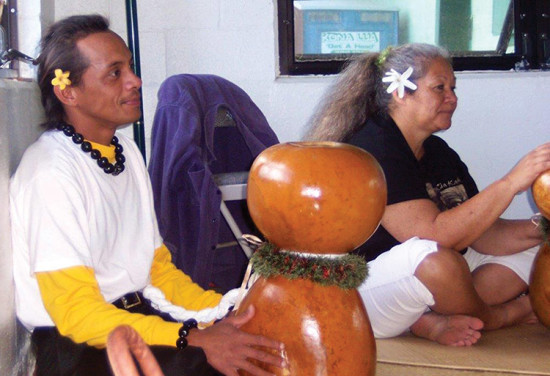
Kumu: The whole community was a family. It was the family of Kohala, so they took care of each other and they made sure that if there was a need of any kind everybody knew about it. They all came forth to see how they could kōkua, how could they help. You know, if we can put forth the same kind of acceptance and effort, we all have the capacity to embrace our differences and our diversity, but it does take work. Perhaps we need to make that extra effort to truly understand each other’s ways.
Perhaps we can figure out a way— to figure out a way—that we can do this together, how we can survive. Uncle told us that it’s possible. That it has been done. And, do we have the courage? Maybe that’s what it is. Are we really courageous enough and willing enough to be vulnerable to each other so that we can get to know each other and be helpful to each other? The way society is today and the changes that are happening all around us, perhaps that is something we should really look upon. I think we would be the wiser for it.
For all of us to flourish and to be all that we are, we all need to be in harmony. For me, that is lōkahi.
Kumu Raylene’s Transcendence
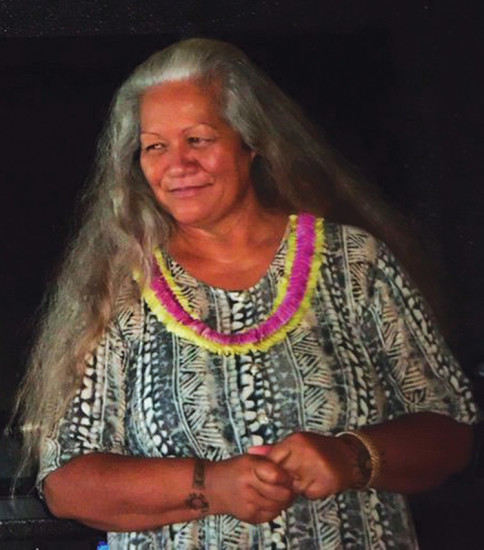
Kumu Raylene Ha‘alelea Kawaiae‘a transitioned from this life unexpectedly on March 9, 2012 at the young age of 61.
Many of us were awaiting her arrival in Kohala for an evening discussion with her about ho‘oponopono when we heard the news. Shock waves reverberated throughout her beloved community of North Kohala where she was part of the cultural foundation as teacher of hula and founder of Na Huapala ‘O Hawai‘i Hālau O Ha‘alelea.
Ripples of grief spread throughout the islands as we all made the transition into another era. Life without Kumu Raylene created an emptiness that many felt and still feel today.
Some say when we lose a revered kupuna some of our connections to the ancient culture and old ways are broken and our spiritual ties to the past feel severed. Some say we lose a “library” of cultural history, as stories and knowledge of the old ways are lost.
There are more than 40 different cultural groups living on Hawai‘i Island. And with Kumu, we lost someone who had the sensitivity to bridge between these cultures and had the understanding of how to bring people together in love and harmony and make them feel as one ‘ohana. It was a rare gift that few share.
She was equally comfortable discussing the most philosophical concepts with world leaders with innate intelligence and mana‘o (knowledge) or telling colorfully animated stories to little children bringing the characters to life with hula ki‘i (Hawaiian puppetry) filled with her warm aloha.
Nowhere else was her spirit more powerful than in her hula and oli (chants). When she danced she was a visible conduit to days gone by when the Hawaiian culture was passed down from generation to generation through hula and each and every movement was performed precisely the way one’s ancestors danced to preserve the meaning and intent. And as a pure expression of aloha, no one danced as expressively or as sensually as Kumu. Her smile of pure aloha spirit made one feel as if she was dancing just for you.
Her oli were haunting and powerful and came from another place and time as she appeared to channel her ‘aumakua. Always a chicken skin moment, her oli were like a magical time machine connecting us to the past.
She spent many years as a teacher at Queen Lili‘uokalani Children’s Center in Kailua-Kona helping children realize their capacity and fully understand their heritage.
And she had a gifted skill working with families as a practitioner in the ancient Hawaiian art of reaching agreement, called ho‘oponopono.
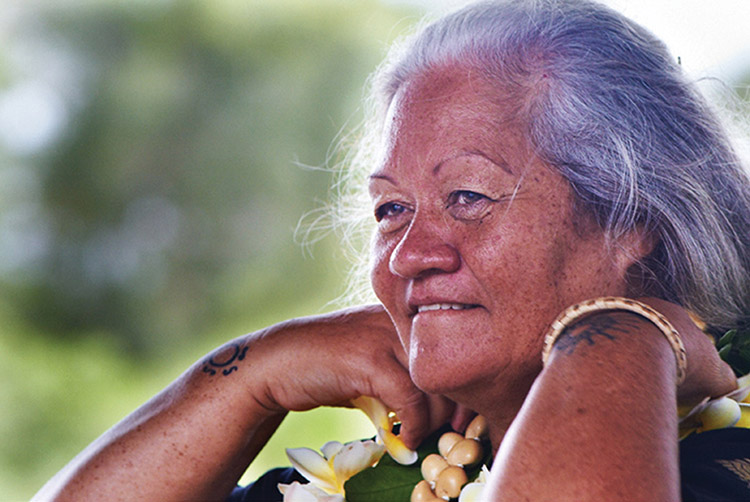
Not only was she was a revered kumu hula and Hawaiian cultural consultant here in Hawai‘i, she traveled and shared her mana‘o around the world as a respected practitioner of Hawaiian spiritual and cultural tradition. One of those occasions was a private audience with His Holiness the Dalai Lama on Maui. One can only imagine what that conversation was like.
As for me, she will always live on in my heart, and I feel incredibly blessed to have had her as my close friend and mentor encouraging me to build cultural bridges with my storytelling and films.
Everything happens for a reason, and I sometimes wonder what my life would be like if Kumu and her boys Ikaika and Michael never came to help unload my container. After two days of very heavy lifting I was so grateful for the boy’s help I tried to pay them some money to thank them for their hard work. Well, the acorn doesn’t fall far from the tree, because all they said was, “Aloha, no need for money. We just wanted to welcome you to Kohala. Aloha.”
And so, with the passage of time, life goes on and so does Kumu Raylene Ha‘alelea Kawaiae‘a’s life’s work; the results of it live on in all the people she touched. ❖
Contact writer Keith Nealy: KeithNealy.com
Kupuna Talk Story ©2014 Keith Nealy Productions
